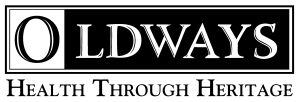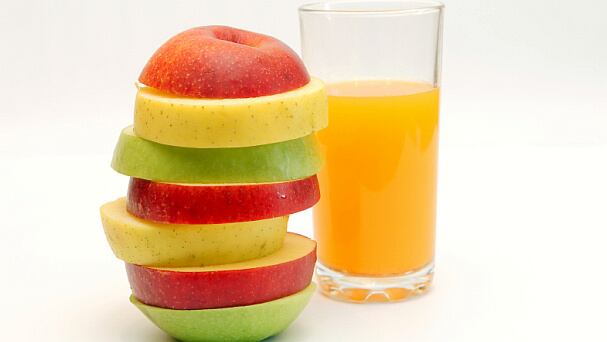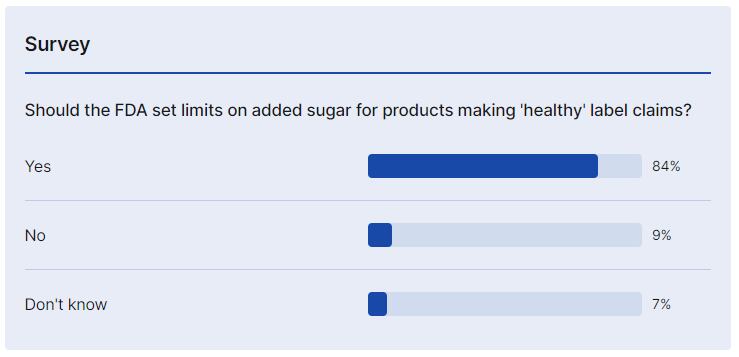In the final wave of comments submitted to the FDA as part of its probe into 'healthy' claims on food labels (the deadline was April 26), some high-profile commentators also expressed deep reservations as to the value of the exercise, with the Academy of Nutrition & Dietetics “unable to identify or recommend” a legal definition at all.
Right now, ‘healthy’ can only be used to describe foods with 3g or less total fat and 1g or less saturated fat per serving (excluding fish and meat), while there are also limits on cholesterol and sodium, and minimum requirements for nutrients to encourage (vitamin A, C, calcium, iron, protein, or fiber).
There are no limits on sugar - added or otherwise.
Fat (not entirely ‘back’)
Most stakeholders agree that ditching the total fat threshold makes sense, but disagree over saturated fat, with some (United Egg Producers, California Walnut Commission) arguing that retaining current limits means walnuts and eggs are left out in the cold, while the CSPI argues that the current thresholds should nevertheless remain.

“Unfortunately,” says the CSPI. “A few flawed or misconstrued studies have created the false impression that the evidence on saturated fat has weakened… However, clinical trials using controlled diets confirm that diets high in saturated fat (primarily from dairy fat) raise LDL, including medium and small LDL, and that replacing saturated fats with polyunsaturated fats lowers LDL.”
The National Dairy Council, however, took issue with this analysis, telling FoodNavigator-USA: "Recent research examining the link between saturated fat consumption directly with cardiovascular disease (CVD) endpoints rather than biomarkers (e.g., low-density lipoprotein cholesterol (LDL-c)) indicates that saturated fat per se may not be associated with CVD risk.
"Along with the new evidence on saturated fat and CVD, numerous studies have shown that consumption of dairy foods, including whole, reduced-fat, low-fat, and fat-free, has either neutral or inverse associations with risk for CVD. It is becoming increasingly clear that dairy foods are unique not only because of the complexity of dairy fat, but also due to the nutrient and non-nutrient components and their interaction in dairy foods (food matrix). The scientific data on cheese provides a useful example of a nutrient-rich food that requires evaluation from a whole food perspective.
"Science continues to show that milk, cheese, and yogurt at all fat levels make important contributions to the nutrient intake of Americans and can be incorporated into healthy dietary patterns. However, under the current regulation for the nutrient content claim 'healthy,' few dairy products qualify for the claim."

"Low-fat milk, low-fat cheese (besides cottage cheese), and low-fat yogurt, as recommended by the Dietary Guidelines for Americans, do not qualify for the nutrient content claim 'healthy' due to total fat and/or saturated fat content... It seems potentially confusing to consumers that dairy products which are specifically recommended by the DGA are nevertheless not considered 'healthy' under FDA regulations."
National Dairy Council
Cholesterol
As for cholesterol, the CSPI also urges the FDA to retain limits on cholesterol for foods labeled ‘healthy,’ arguing that “dietary cholesterol raises LDL cholesterol, should be limited in healthy eating patterns, and is overconsumed by many Americans” and that “allowing a ‘healthy’ claim on eggs [for example] would… greatly increase the risk of overconsuming cholesterol and the risk of heart disease.”
However, Unilever says that this theory has been debunked, and that “limiting intake of [dietary] cholesterol is no longer a concern based on current scientific evidence.”

The Egg Nutrition Center, meanwhile, points out that the latest Dietary Guidelines for Americans do not set a limit on dietary cholesterol, while the DG advisory committee found “no appreciable relationship between consumption of dietary cholesterol and serum cholesterol.”
Added sugar – how much is too much?
Perhaps the biggest bone of contention, however, is added sugar, with some industry stakeholders such as the Cranberry Institute arguing that a nutrient-packed “fruit like the cranberry, which is sweetened for palatability, should not be discounted for containing added sugar,” while The Academy of Nutrition and Dietetics “strongly supports updating any ‘healthy’ definition to limit added sugars.”
The CSPI, meanwhile, recommends a limit of 3g added sugars, or 5% of the DV (50g), per RACC for products making ‘healthy’ claims, while the GMA strikes a more cautious note: “If added sugars are included in the definition of ‘healthy,’ GMA supports the use of the DV as the basis for determining the added sugars criteria. However… the DV for added sugars should be based on scientific evidence, not modeling, and a review of the DRI is needed.”
Nutrients to encourage… and must they be naturally occurring?
As for which nutrients to encourage to include in the criteria for ‘healthy’ claims, several commentators argue that the current options (contains at least 10% of DV/RACC for vitamins A, C, calcium, iron, protein, or fiber) should be expanded to include vitamin D and potassium (which the FDA has already suggested) plus vitamin E, folate, choline, and magnesium.
However, not everyone agrees that fortified foods should qualify, with the Academy of Nutrition and Dietetics arguing that, “We would support requiring that only naturally occurring nutrients of public health concern may be included in calculations for the purpose of determining whether that product is eligible to carry the ‘healthy’ nutrient content claim.”
The CSPI adds: “FDA should not allow healthy claims on foods of low nutrient density fortified with vitamins, minerals, or added fiber.”
However, the American Bakers Association says such an approach would "convey to consumers that food fortification is an inferior means of achieving and maintaining a desirable level of nutritional quality in the diet, even though this is not true."

Oldways: ‘It’s time we stopped tying ‘healthy’ to a formula of nutrients divorced from actual foods’
Is juice ‘healthy?’
When it comes to food groups, as opposed to isolated nutrients to encourage or discourage, juice emerges as another bone of contention.
The CSPI, for example, argues that “FDA should not allow ‘healthy’ claims on fruit juices,” on the grounds that we should be encouraging consumers to eat "the healthiest form of fruit: whole fruit."

It adds: “Experimental evidence demonstrates that intact fruit is more satiating than fruit juice, and that people are less likely to compensate for calories consumed from juice by eating less food. Fruit juice is also more likely to lead to extreme responses in blood sugar and insulin levels than whole fruit.
“Furthermore, fruit juice was prospectively associated with the risk of weight gain among normal‐weight adults in the Nurses’ Health Studies and the Health Professionals Follow‐Up Study. Too much fruit juice may also increase the risk for type 2 diabetes.”
Not surprisingly, the Juice Products Association begs to differ, arguing that “100% fruit and veg juices and 100% juice blends should be subject to the same criteria for the ‘healthy’ claim that apply to raw fruits and vegetables.”
The American Beverage Association also encourages a ‘hybrid’ approach that would permit a ‘healthy’ claim on products [including 100% fruit/veg juice and certain dairy products] that offer a nutritional benefit without contributing excessive levels of nutrients of concern to the diet.”
Here are a selection of comments on 'healthy' food label claims from stakeholders:
Academy of Nutrition and Dietetics: The Academy is not able to identify or recommend adoption at this time of an effective legal definition for the ‘healthy’ nutrient content claim that satisfies both the Academy’s labeling principles; and the significant statutory and regulatory requirements for nutrient content claims.
We are concerned that the term ‘healthy’ has the potential to cause consumer confusion because it seems to imply that a single food should meet all dietary needs.
National Milk Producers Federation (NMPF): Reduced-fat forms of all dairy foods (as well as low-fat and fat-free forms) should be able to claim 'healthy' status as long as they are a good source of one or more of the specified nutrients, without regard to criteria on total fat, saturated fat, cholesterol or sodium.
As nutrition science develops further, it is possible the full fat form of dairy products, such as full-fat cheese, may also be deemed to merit a 'healthy' claim. However, NMPF recognizes that FDA desires to encourage the reduction of saturated fat content generally, in part to reduce caloric intake and in part because the health effects of the unique set of fatty acids in dairy foods may not be identical to the effects of saturated fat consumption.
California Walnut Commission: Despite the favorable fatty acid profile and nutrient density of nuts, FDA’s rigid ‘low saturated fat’ and jelly bean rule requirements ban healthy claims for walnuts and other healthful nuts. We urge FDA to eliminate all nutrient-specific requirements that stand in the way of healthy claims for walnuts and other nuts.
American Bakers Association: A revised definition of 'healthy' must not exclude enriched/fortified foods, such as foods enriched with folic acid and other foods with beneficial nutrients that are not intrinsic to the food. There is no scientific basis for an approach that requires “healthy” claims to be based on nutrients intrinsic to the food. A definition that excludes enriched/fortified foods may have unintended adverse public health consequences.
A definition of 'healthy' that requires beneficial nutrients to be intrinsic to the food and excludes enriched/fortified foods not only would be plainly inconsistent with agency precedent and the current body of scientific evidence, but it also would create the potential for consumer confusion. Such a change would convey to consumers that food fortification is an inferior means of achieving and maintaining a desirable level of nutritional quality in the diet, even though this
is not true.
American Society for Nutrition: ASN questions whether use of such a term as ‘healthy’ is appropriate and beneficial for food labeling purposes … There also appears to be a lack of evidence that there are public health benefits to defining and using the term “healthy” in food labeling.
The Cranberry Institute:A fruit like the cranberry, which is sweetened for palatability, should not be discounted for containing added sugar.
Grocery Manufacturers Association (GMA):It is appropriate and feasible to include both nutrients and food groups as criteria defining use of the term ‘healthy.’ GMA supports FDA’s draft guidance that makes a provision for foods that are not low in total fat to bear a ‘healthy’ claim provided that the product’s fat profile consists of predominantly mono- and polyunsaturated fats.
GMA supports an amendment that removes the percentage of calories requirement and increases the saturated fat limits to allow for greater inclusion of food groups to encourage such as nuts, seeds and oils. GMA suggests that the disclosure level and criteria for cholesterol be removed.
GMA supports recent FDA guidance to include vitamin D and potassium in the list of nutrients to encourage, and also proposes that the current list of nutrients (protein, fiber, calcium, iron and vitamins A & C) be expanded to include choline, magnesium and vitamin E.
Conventional foods that are lawfully qualified to use an FDA-authorized health claim should be permitted to use the term ‘healthy’ in product labeling.
American Beverage Association: Unsweetened, zero-calorie beverages should automatically qualify to bear a ‘healthy’ label. Such beverages could include unflavored and flavored non-carbonated (still) and carbonated (sparkling) waters; unsweetened, zero-calorie teas; or unsweetened, zero-calorie coffees.
FDA should also permit foods and beverages that are (or become) eligible to bear a health claim under its existing regulatory framework to bear a more general ‘healthy’ label.
Center for Science in the Public Interest (CSPI): Healthy claims should steer consumers toward fruits, vegetables, whole grains, and other under-consumed healthy foods and away from their competitors in the processed food aisles.
FDA should not allow ‘healthy’ claims on fruit juices. CSPI strongly supports a requirement that 100% of the grains in 'healthy' foods be whole grains or bran.
‘Healthy’ foods should contain no more than 3g added sugars, or 5% of the DV (50g), per RACC. The FDA should eliminate the total fat limit but retain limits on saturated fat and cholesterol and strengthen limits on sodium.
Unilever: Unilever proposes that total fat and cholesterol no longer be included as criteria for making a 'healthy' claim. Unilever believes labeling calorie-free beverages as “healthy” could have important public health benefits.
The Association for Dressings and Sauces: Salad dressings help consumers maintain healthy dietary practices, so should be excluded from the 10% nutrient content.
Partnership for a Healthier America: PHA defines as ‘healthier’ any product that is proportionally below the threshold for recommended daily intake of trans fats, saturated fats, sodium, and sugar that alsolists a whole food equivalent as the first or second ingredient.
Alternatively ‘healthier’ foods would simply require that the first and second ingredient listed on the product must come from one of the designated food equivalent groups: Fruit, veggies, dairy, whole grains, proteins, and [selected] fats & oils.

